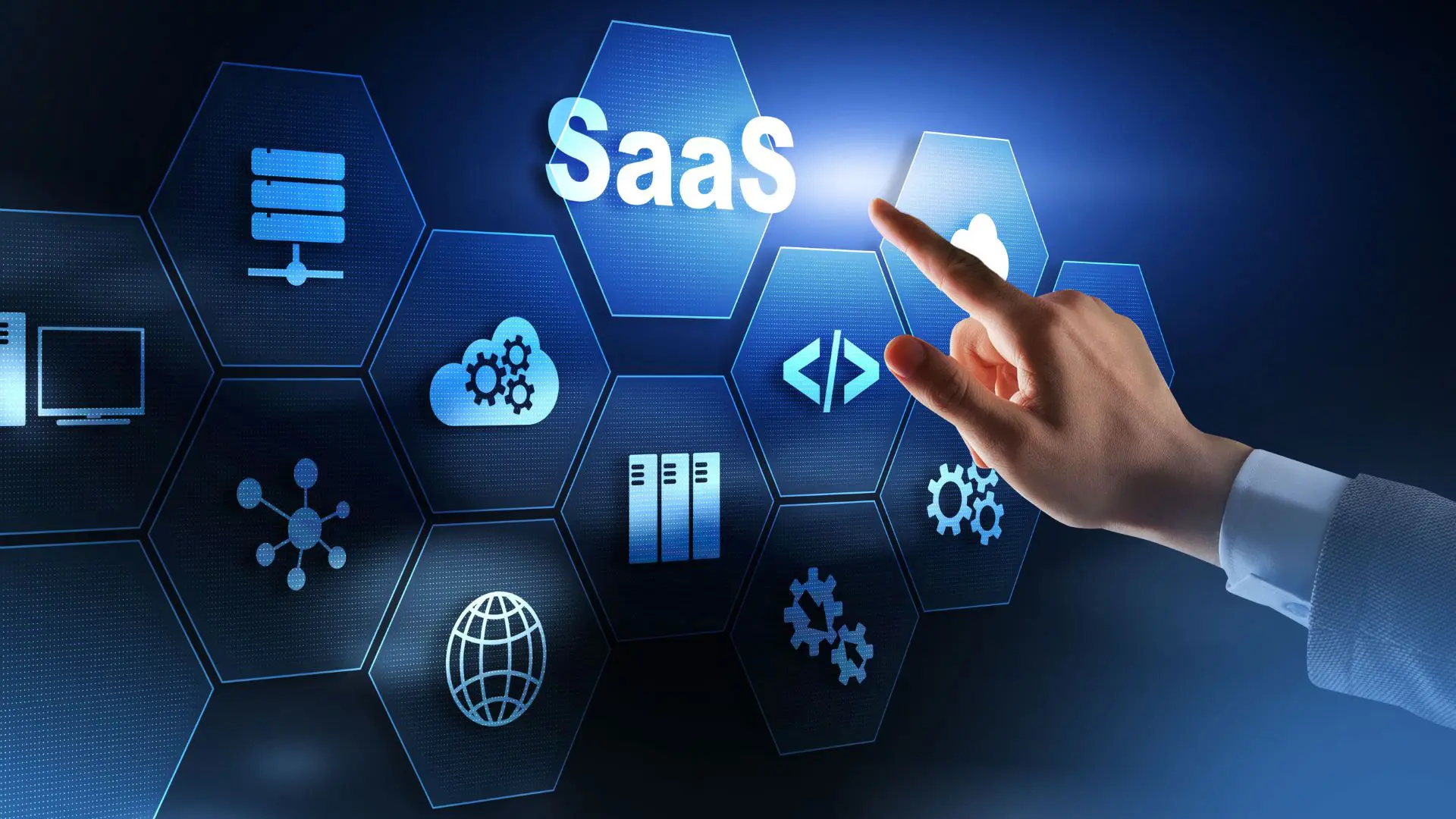In today’s rapidly evolving digital landscape, businesses are increasingly relying on SaaS Software as a Service to streamline operations, enhance productivity, and drive innovation. But what exactly is SaaS, and how can it benefit your organization? In this blog post, we will explore the meaning of SaaS, delve into its benefits, discuss different types, analyze costs, and provide real-world examples of successful SaaS implementations.
What is SaaS?
Discover the meaning and significance of Software as a Service (SaaS) and how it revolutionizes software delivery and usage.
At its core, software as a service (SaaS) is a cloud computing model where software applications are provided to users over the internet on a subscription basis. Unlike traditional software installations that require local installation and maintenance, SaaS applications are hosted and managed by the SaaS provider, allowing users to access them through web browsers or dedicated client applications.
Related Post 👉 KPIs for SaaS: What should you measure?
How does software as a service work?
In a SaaS model, the SaaS provider handles all aspects of software maintenance, including updates, security, and infrastructure management. Users can access the software from anywhere with an internet connection, eliminating the need for complex installation procedures and enabling collaboration across distributed teams. This on-demand accessibility and centralized management make SaaS a popular choice for businesses of all sizes and industries.
SaaS architecture
SaaS applications are typically built on a multi-tenant architecture, where a single instance of the software serves multiple customers. This architecture allows the provider to efficiently scale resources and deliver cost-effective services. Additionally, data isolation and security measures are implemented to ensure the privacy and confidentiality of each customer’s data.
Exploring the Benefits of SaaS
Uncover the numerous advantages of SaaS, including cost savings, scalability, accessibility, automatic updates, and simplified maintenance.

Advantages of SaaS
One of the key benefits of SaaS is its cost-effectiveness. With SaaS, businesses can avoid upfront software licensing and infrastructure costs, as well as ongoing maintenance expenses. Instead, they pay a predictable subscription fee, which can be easily scaled based on usage and business needs. This cost predictability and scalability make SaaS an attractive option for organizations looking to optimize their IT budgets.
- Another advantage of SaaS is its rapid deployment and time-to-value. With traditional software installations, businesses may need to wait weeks or months to implement and customize the software. In contrast, SaaS applications are typically ready to use, allowing organizations to quickly onboard and start leveraging the software’s functionalities. This accelerated deployment time enables businesses to streamline their operations and drive faster return on investment.
- Furthermore, SaaS offers flexibility and accessibility. Users can access the software and their data from any device with an internet connection, making it ideal for remote work, distributed teams, and business travel. This anytime, anywhere accessibility empowers collaboration and productivity, as teams can seamlessly collaborate and access critical information regardless of their physical location.
- SaaS applications are also known for their regular updates and enhancements. The responsibility for software updates and patches lies with the SaaS provider, ensuring that users always have access to the latest features and security improvements. This eliminates the need for manual updates and allows organizations to stay current with technological advancements.
Challenges and risks of SaaS
While SaaS offers numerous benefits, it’s important to be aware of potential challenges and risks. One of the primary concerns is data security and privacy. With SaaS, businesses entrust their data to the SaaS provider, which requires robust security measures and compliance with data protection regulations. It is essential for organizations to assess the provider’s security practices, data encryption protocols, and adherence to regulatory requirements to ensure the confidentiality and integrity of their data.
- Another challenge is the dependency on the SaaS provider for ongoing support and maintenance. Organizations need to have clear communication channels and service level agreements (SLAs) in place to address any issues or concerns promptly. It’s crucial to evaluate the provider’s responsiveness, support mechanisms, and escalation procedures to ensure smooth operations and minimize disruptions.
- Vendor lock-in is another consideration. Switching from one SaaS provider to another can be complex and may involve data migration challenges. It’s important to carefully evaluate the provider’s contract terms, data portability options, and exit strategies to maintain flexibility and minimize potential vendor lock-in risks.
- Additionally, there may be limitations in customization and integration capabilities with SaaS applications. Organizations should assess their specific customization requirements and integration needs with other systems to ensure that the chosen SaaS solution can adequately meet their business objectives.
A Brief History of SaaS:
Software as a Service (SaaS) has its roots in the mainframe era of computing in the 1960s and 1970s. However, the modern-day SaaS model as we know it today emerged in the late 1990s and early 2000s with the advent of the internet. The first SaaS applications were simple web-based tools like email, CRM, and project management software.
Salesforce, launched in 1999, was one of the earliest examples of a SaaS application, offering web-based CRM. Other pioneers included NetSuite (1998) for accounting and ERP, and WebEx (1995) for web conferencing. Despite initial challenges, such as slow internet speeds, SaaS gained momentum as infrastructure improved.
The rise of cloud computing further fueled SaaS growth. Cloud infrastructure became more robust, reducing the cost and complexity of deploying and managing SaaS applications. SaaS quickly became the dominant model for software delivery, with businesses shifting from on-premises solutions to cloud-based SaaS.
In recent years, SaaS has seen significant developments. The mobile-first approach has become crucial, with SaaS providers optimizing applications for mobile devices. Artificial intelligence (AI) has also played a role, enabling advanced functionality like predictive analytics and machine learning.
Platformisation has expanded SaaS offerings beyond standalone applications, allowing third-party developers to build on SaaS infrastructure. Integration capabilities have improved, making it easier for users to connect and share data across systems. Data security has become a top priority, with robust measures in place to protect user information.
SaaS continues to drive digital transformation and innovation, with a focus on scalability, flexibility, and cost-effectiveness. As SaaS evolves, it will shape the future of software delivery and further revolutionize the way businesses operate.
Related Post 👉 Best Way To Scale Your SaaS Company Risk-Free: Nearshore Staff Augmentation
Real-World Examples of Successful SaaS Implementations

Gain inspiration from real-life case studies of organizations that have effectively leveraged SaaS to enhance productivity, streamline operations, and drive business growth. Here you can see Examples of popular SaaS products:
Salesforce
Salesforce is a leading SaaS provider known for its customer relationship management (CRM) solutions. Their cloud-based platform offers a wide range of functionalities, including sales automation, marketing campaigns, customer service management, and analytics. With Salesforce, businesses can streamline their sales processes, improve customer engagement, and gain actionable insights from their data.
Slack
Slack is a collaboration and communication tool that has gained popularity for its efficient team messaging capabilities. It allows teams to organize conversations into channels, share files, integrate with other productivity tools, and facilitate real-time communication. Slack’s user-friendly interface and powerful collaboration features have made it a go-to choice for businesses seeking effective team communication and collaboration.
Adobe Creative Cloud
Adobe Creative Cloud is a comprehensive suite of creative tools and applications used by professionals in various creative industries. From graphic design and video editing to web development and digital marketing, Adobe Creative Cloud provides a range of software solutions that enable users to unleash their creativity and bring their ideas to life.
HubSpot
A comprehensive inbound marketing and sales platform that helps businesses attract, engage, and delight customers. It offers a suite of tools for content management, lead generation, email marketing, and customer relationship management.
Zoom
A video conferencing and communication platform that gained immense popularity during the COVID-19 pandemic. It enables individuals and businesses to connect, collaborate, and conduct virtual meetings, webinars, and online events.
Conclusion
SaaS has revolutionized the way businesses access and utilize software applications.
Its cost-effectiveness, scalability, rapid deployment, and accessibility make it an attractive option for organizations looking to optimize their operations and drive business success. However, it’s essential to consider the potential challenges and risks associated with SaaS and make informed decisions when selecting a provider.
By leveraging successful SaaS Software as a Service implementations like Salesforce, Slack, and Adobe Creative Cloud, businesses can unlock the full potential of SaaS and achieve their objectives in today’s digital landscape.
- Staying Agile During a Hiring Freeze: The Role of IT Outsourcing - June 17, 2025
- Strategies to Improve the Software Development Life Cycle - June 13, 2025
- How Custom Software Can Streamline and Elevate Your Operations - May 8, 2025
